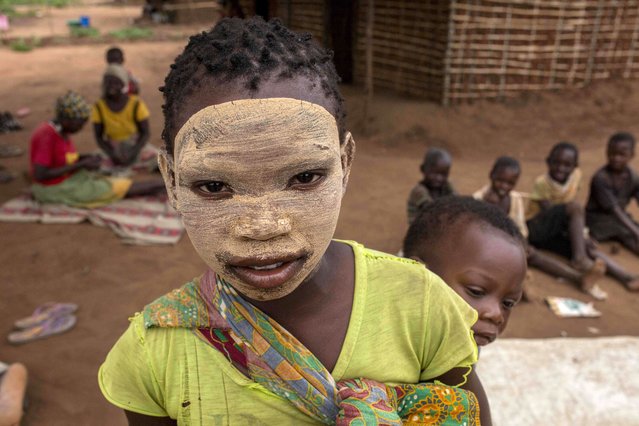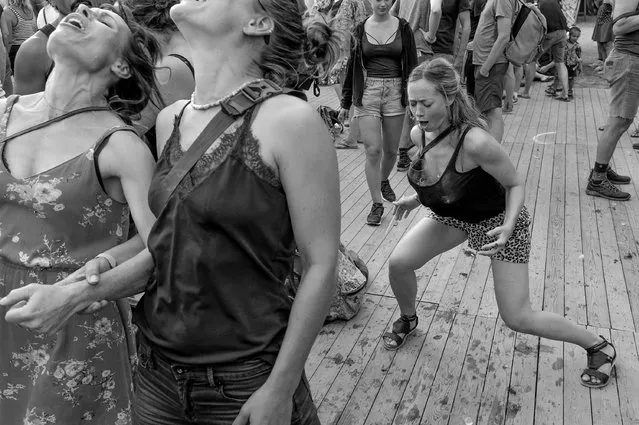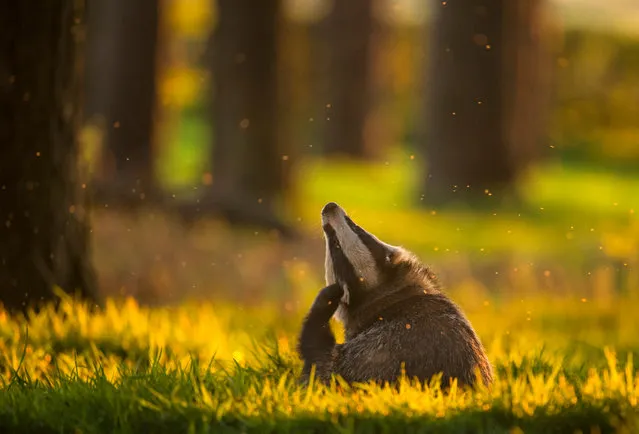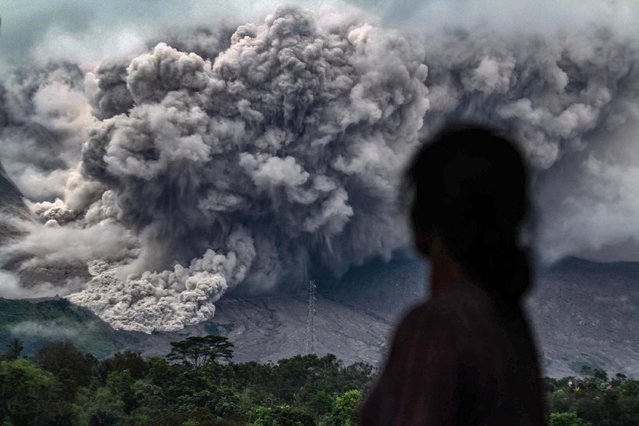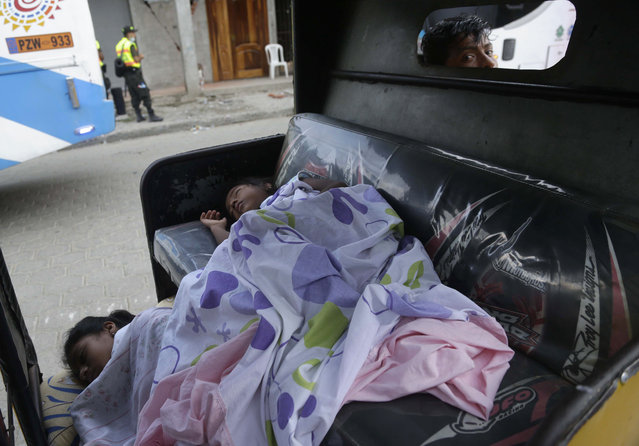
Girls sleep in the back of their father's moto-taxi as he watches them from the front seat, days after an earthquake in Pedernales, Ecuador, Wednesday, April 20, 2016. A fresh tremor rattled Ecuador before dawn Wednesday, a magnitude-6.1 jolt that set babies crying and shaken residents pouring once again into the streets, fearful of yet more damage following a monster earthquake over the weekend. (Photo by Dolores Ochoa/AP Photo)
21 Apr 2016 12:02:00,post received
0 comments


